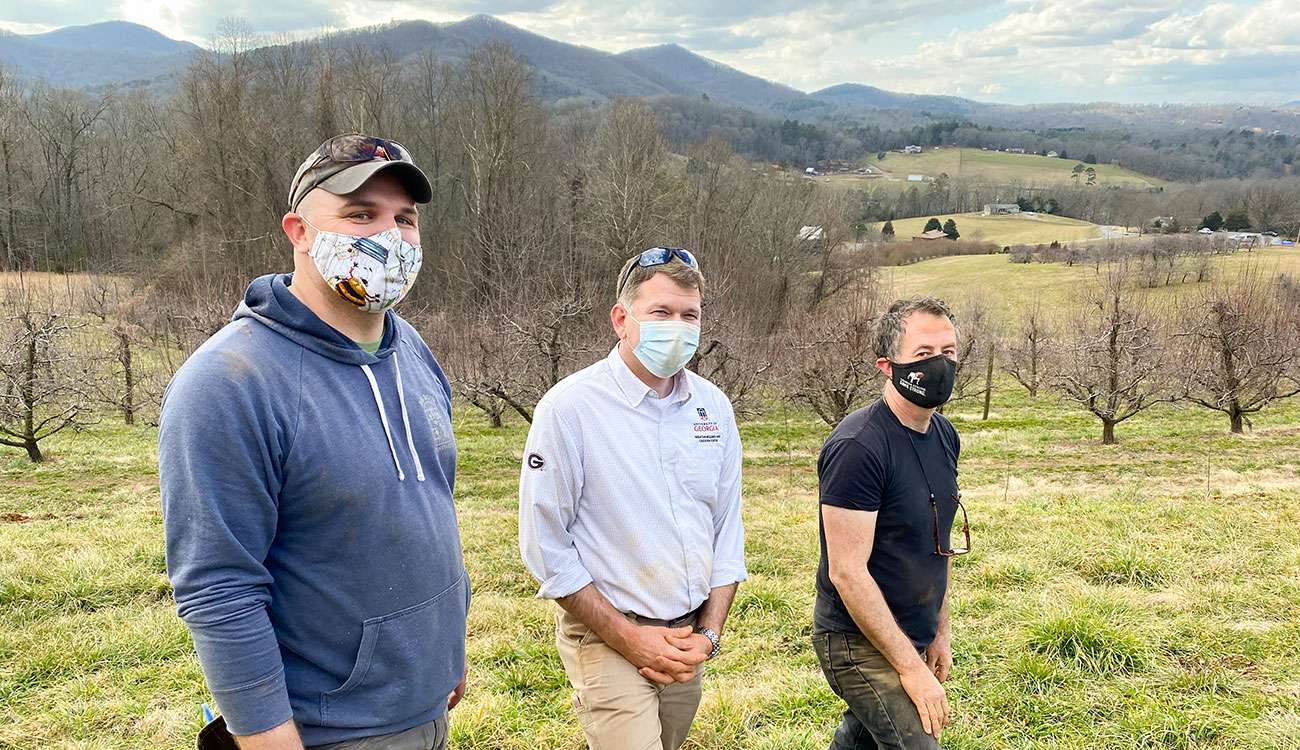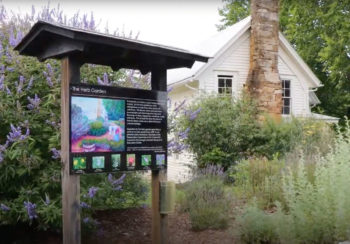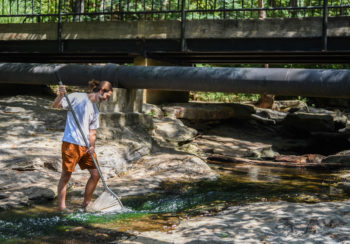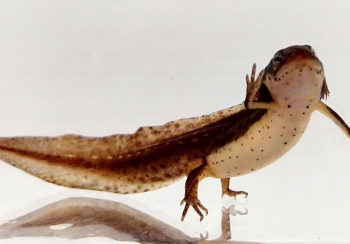Visitors to the Heritage Orchard will be treated to this view from the Georgia Mountain Research & Education Center, a unit of the College of Agricultural & Environmental Sciences. The center was already home to hundreds of apple trees, but only of a few, much more common varieties. (Photo by Michael Terrazas)
The Heritage Orchard will certainly serve as an invaluable research resource, but it grew out of Mihm’s personal interest. He and his wife had purchased an old farmhouse near Athens that came with a restrictive covenant requiring the acreage be used, at least in part, for agricultural production. A native of Connecticut with fond childhood memories of apple orchards and cider mills, Mihm decided to plant a few lesser-known varieties and became interested in learning more about them.
Meanwhile Joshua Fuder, the UGA Cooperative Extension agent for Cherokee County, had also purchased a home with several heirloom apple trees planted in the yard. Not knowing much about apples and feeling both a professional and personal obligation to learn more, he soon knew enough to hold a local grafting workshop in Cherokee. Eventually his research led him to the U.S. Department of Agriculture’s Plant Genetic Resources Unit, based in Geneva, N.Y.
“They said, ‘Hey, did you know there’s a professor down there who’s working on this, too?’” recalled Fuder, who tracked down Mihm and suggested they collaborate. Armed with a modest USDA grant, the two began to search for lost Georgia apple varieties, a task that quickly proved challenging when you’re talking about single, lonely trees spread across the state.
The problem lay in apple trees’ method of reproduction. Because trees grown from seed often do not produce the fruit of either parent, commercial apple trees typically are created by grafting a cutting (or scion) from the desired variety to the rootstock of another variety. So there were no forgotten drawers of old seeds waiting to be discovered—Fuder and Mihm would have to exhaust every connection they had to find clues. Mihm said he spent many hours driving backwoods roads, scanning the countryside for the occasional stand of apple trees.

Meanwhile they were having better luck turning up examples of apple varieties that were not quite lost but still uncommon—some even in danger of disappearing. They pivoted and successfully filed for a revision of the USDA grant, with the primary purpose this time being to create a repository for this small but growing catalog. And so was born the idea for the Heritage Orchard.
“It’s a beautiful thing to work together as a community and as a state to preserve these varieties,” said Ashley Hoppers, the Extension agent for Fannin and Gilmer counties, which are home to approximately 90% of the state’s commercial apple production. “The growers around Ellijay and Blue Ridge have a rich heritage in North Georgia apple production, and now we’re starting to hear stories of what the farm was like when their fathers or grandfathers were managing them.
“For example, Barry Pritchett with Red Apple Barn proudly shared a story with me about a unique apple variety his grandfather found on the property,” Hoppers said. “They named it ‘Pritchett Golden,’ and they still grow and sell it from their farm today.”
To date, the team has preserved nearly 140 different varieties. In March 2020, they grafted scion wood from 101 of those varieties onto M7 rootstock, which will result in trees in the just-right range for height and vigor. For almost a year the young trees grew in pots at the Blairsville station, protected from hungry deer by an electrified fence. Then, on a beautiful afternoon in early February, those time-traveling trees went in the ground.
One of the planters that day was Brad Davis, professor in the College of Environment and Design. Davis is an affiliated faculty member on Mihm’s USDA grant supporting the Heritage Orchard, and his interest stems from a disciplinary concern with people-plant connections.
“One very basic benefit is simply to reconnect Georgians with the history, and the agricultural history, of their state … At one time, Habersham County arguably produced more apples per capita than any other part of the country—it was big business.”
– Stephen Mihm, associate professor of history
Photo by Amy Ware
“This project tugged at my heart,” Davis said. “Historic apple trees and orchards show us past ways of farming and living in closer connection with the land. Our society is still searching for this ideal. Orchards can be part of tomorrow’s parks, green spaces and communities, and the way we manage public and private land can become so much more nature-friendly.”
The orchard is definitely attracting interdisciplinary partners: Franklin College is represented through Mihm, CAES through Covington, the Extension through Fuder and Hoppers and other agents, and Davis and CED add another flavor to the mix.
“It’s just a fantastic collaboration,” Covington said.
In March 2021, another batch of varieties will be grafted onto rootstock, and those baby trees will also spend time growing in pots within their safe enclosure, waiting to join their older cousins in the ground. Within about three years, the Heritage Apple Orchard will produce its first fruit.
As for apple varieties that have been truly lost, Mihm and Fuder hope that once people hear about the Heritage Orchard, the owners of those lonely trees will come to them. And Georgia aficionados again will have a chance to sample apples their great-great-grandparents might have once enjoyed.
“At one time, Habersham County arguably produced more apples per capita than any other part of the country—it was big business,” said Mihm, who also hopes the Heritage Orchard provides a boost for the state’s cider industry, similar to what’s happened with Georgia winemakers. “The Mountain Research & Education Center gets a huge number of visitors each year. We hope to have tastings and cider pressings—we want to have public events to show people in this state that they can grow these apples again after 100 years.”








